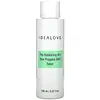What's inside
What's inside
 Key Ingredients
Key Ingredients

 Benefits
Benefits

 Concerns
Concerns

 Ingredients Side-by-side
Ingredients Side-by-side

Water
Skin ConditioningAloe Barbadensis Leaf Water
MaskingDipropylene Glycol
HumectantGlycerin
HumectantButylene Glycol
HumectantPentylene Glycol
Skin ConditioningPolyglyceryl-10 Laurate
Skin ConditioningBetaine Salicylate
AntimicrobialAloe Barbadensis Leaf Extract
EmollientAloe Barbadensis Leaf Juice Powder
Skin ConditioningAloe Barbadensis Leaf Juice
Skin ConditioningPropolis Extract
Skin ConditioningSnail Secretion Filtrate
Skin ConditioningBee Venom
AstringentBifida Ferment Lysate
Skin ConditioningBeta-Glucan
Skin ConditioningSodium Hyaluronate
HumectantPolyglutamic Acid
Skin ConditioningArginine
Masking1,2-Hexanediol
Skin ConditioningCaprylyl Glycol
EmollientAcrylates/C10-30 Alkyl Acrylate Crosspolymer
Emulsion StabilisingXanthan Gum
EmulsifyingWater, Aloe Barbadensis Leaf Water, Dipropylene Glycol, Glycerin, Butylene Glycol, Pentylene Glycol, Polyglyceryl-10 Laurate, Betaine Salicylate, Aloe Barbadensis Leaf Extract, Aloe Barbadensis Leaf Juice Powder, Aloe Barbadensis Leaf Juice, Propolis Extract, Snail Secretion Filtrate, Bee Venom, Bifida Ferment Lysate, Beta-Glucan, Sodium Hyaluronate, Polyglutamic Acid, Arginine, 1,2-Hexanediol, Caprylyl Glycol, Acrylates/C10-30 Alkyl Acrylate Crosspolymer, Xanthan Gum
Propolis Extract 65%
Skin ConditioningHoney Extract
HumectantDipropylene Glycol
HumectantButylene Glycol
HumectantHydroxyethyl Urea
HumectantPropanediol
SolventNiacinamide
Smoothing1,2-Hexanediol
Skin ConditioningCentella Asiatica Extract
CleansingMelaleuca Alternifolia Leaf Water
AntimicrobialHoney
HumectantPanthenol
Skin ConditioningRoyal Jelly Extract
Skin ConditioningArtemisia Princeps Leaf Extract
Skin ConditioningCentella Asiatica Leaf Extract
Skin ConditioningPollen Extract
EmollientMalt Extract
Skin ProtectingGlycerin
HumectantSodium Hyaluronate
HumectantAllantoin
Skin ConditioningAdenosine
Skin ConditioningMadecassoside
AntioxidantMadecassic Acid
Skin ConditioningAsiaticoside
AntioxidantAsiatic Acid
Skin ConditioningCeramide NP
Skin ConditioningCitric Acid
BufferingSodium Citrate
BufferingC12-13 Pareth-9
EmulsifyingSodium Polyacrylate
AbsorbentWater
Skin ConditioningBenzyl Glycol
SolventEthylhexylglycerin
Skin ConditioningRaspberry Ketone
MaskingDisodium EDTA
Parfum
MaskingBenzyl Alcohol
PerfumingCoumarin
PerfumingPropolis Extract 65%, Honey Extract, Dipropylene Glycol, Butylene Glycol, Hydroxyethyl Urea, Propanediol, Niacinamide, 1,2-Hexanediol, Centella Asiatica Extract, Melaleuca Alternifolia Leaf Water, Honey, Panthenol, Royal Jelly Extract, Artemisia Princeps Leaf Extract, Centella Asiatica Leaf Extract, Pollen Extract, Malt Extract, Glycerin, Sodium Hyaluronate, Allantoin, Adenosine, Madecassoside, Madecassic Acid, Asiaticoside, Asiatic Acid, Ceramide NP, Citric Acid, Sodium Citrate, C12-13 Pareth-9, Sodium Polyacrylate, Water, Benzyl Glycol, Ethylhexylglycerin, Raspberry Ketone, Disodium EDTA, Parfum, Benzyl Alcohol, Coumarin
 Reviews
Reviews

Ingredients Explained
These ingredients are found in both products.
Ingredients higher up in an ingredient list are typically present in a larger amount.
1,2-Hexanediol is a synthetic liquid and another multi-functional powerhouse.
It is a:
- Humectant, drawing moisture into the skin
- Emollient, helping to soften skin
- Solvent, dispersing and stabilizing formulas
- Preservative booster, enhancing the antimicrobial activity of other preservatives
Butylene Glycol (or BG) is used within cosmetic products for a few different reasons:
Overall, Butylene Glycol is a safe and well-rounded ingredient that works well with other ingredients.
Though this ingredient works well with most skin types, some people with sensitive skin may experience a reaction such as allergic rashes, closed comedones, or itchiness.
Learn more about Butylene GlycolDipropylene Glycol is a synthetically created humectant, stabilizer, and solvent.
This ingredient helps:
Dipropylene glycol is technically an alcohol, but it belongs to the glycol family (often considered part of the ‘good’ alcohols). This means it is hydrating and gentle on skin unlike drying solvent alcohols like denatured alcohol.
As a masking agent, Dipropylene Glycol can be used to cover the smell of other ingredients. However, it does not have a scent.
Studies show Dipropylene Glycol is considered safe to use in skincare.
Learn more about Dipropylene GlycolGlycerin is already naturally found in your skin. It helps moisturize and protect your skin.
A study from 2016 found glycerin to be more effective as a humectant than AHAs and hyaluronic acid.
As a humectant, it helps the skin stay hydrated by pulling moisture to your skin. The low molecular weight of glycerin allows it to pull moisture into the deeper layers of your skin.
Hydrated skin improves your skin barrier; Your skin barrier helps protect against irritants and bacteria.
Glycerin has also been found to have antimicrobial and antiviral properties. Due to these properties, glycerin is often used in wound and burn treatments.
In cosmetics, glycerin is usually derived from plants such as soybean or palm. However, it can also be sourced from animals, such as tallow or animal fat.
This ingredient is organic, colorless, odorless, and non-toxic.
Glycerin is the name for this ingredient in American English. British English uses Glycerol/Glycerine.
Learn more about GlycerinPropolis Extract is also known as bee glue.
This ingredient has antimicrobial, anti-inflammatory, wound healing, and antioxidant properties.
Studies show propolis helps fight against bacteria, viruses, and fungi. This may help with reducing acne and accelerate wound healing.
The flavonoids found in propolis extract are potent antioxidants. Antioxidants may help with reducing the signs of aging.
A study from 2020 found propolis to help reverse skin damage from UV.
Fun facts: This ingredient is created by mixing beeswax, bee saliva, and parts of trees. Bees use propolis as a sealant to close any gaps in their hives.
Since it is an animal-derived product, this ingredient is not considered vegan. For vegan alternatives, check out Galactomyces Ferment Filtrate or Centella Asiatica Extract.
Learn more about Propolis ExtractSodium Hyaluronate is hyaluronic acid's salt form. It is commonly derived from the sodium salt of hyaluronic acid.
Like hyaluronic acid, it is great at holding water and acts as a humectant. This makes it a great skin hydrating ingredient.
Sodium Hyaluronate is naturally occurring in our bodies and is mostly found in eye fluid and joints.
These are some other common types of Hyaluronic Acid:
Learn more about Sodium HyaluronateWater. It's the most common cosmetic ingredient of all. You'll usually see it at the top of ingredient lists, meaning that it makes up the largest part of the product.
So why is it so popular? Water most often acts as a solvent - this means that it helps dissolve other ingredients into the formulation.
You'll also recognize water as that liquid we all need to stay alive. If you see this, drink a glass of water. Stay hydrated!
Learn more about Water